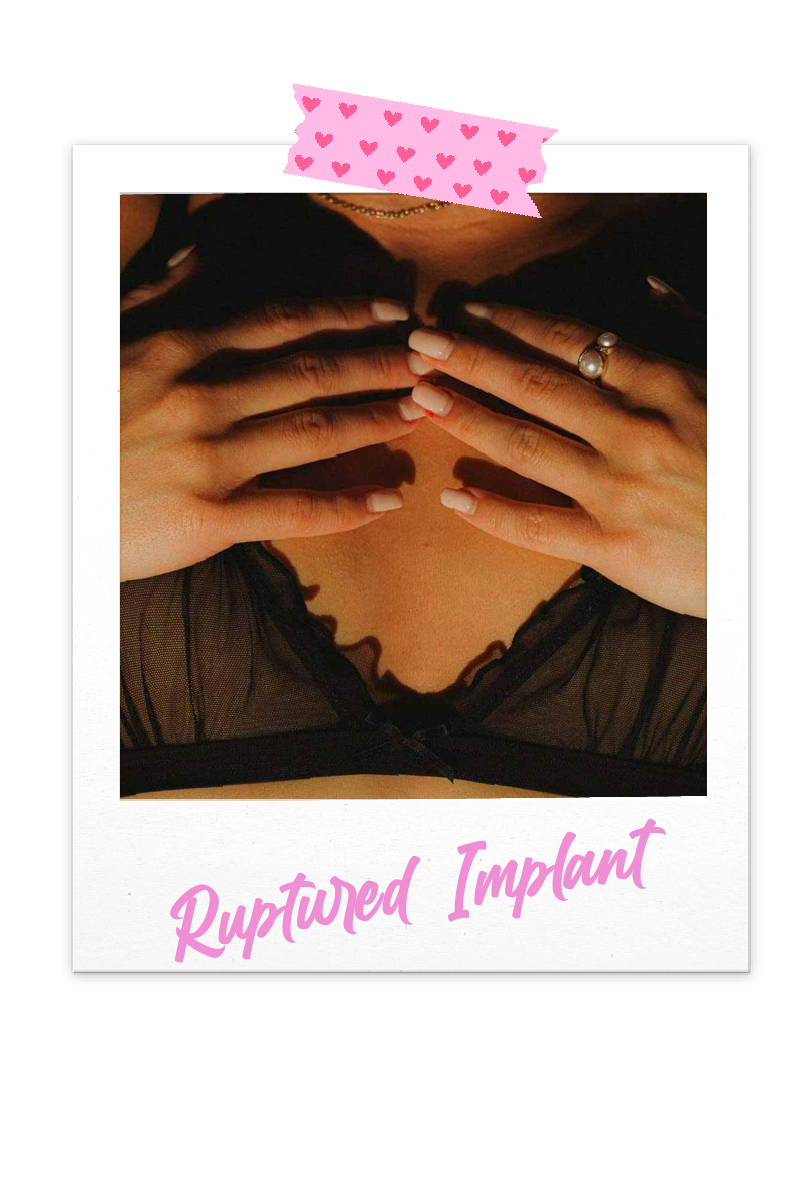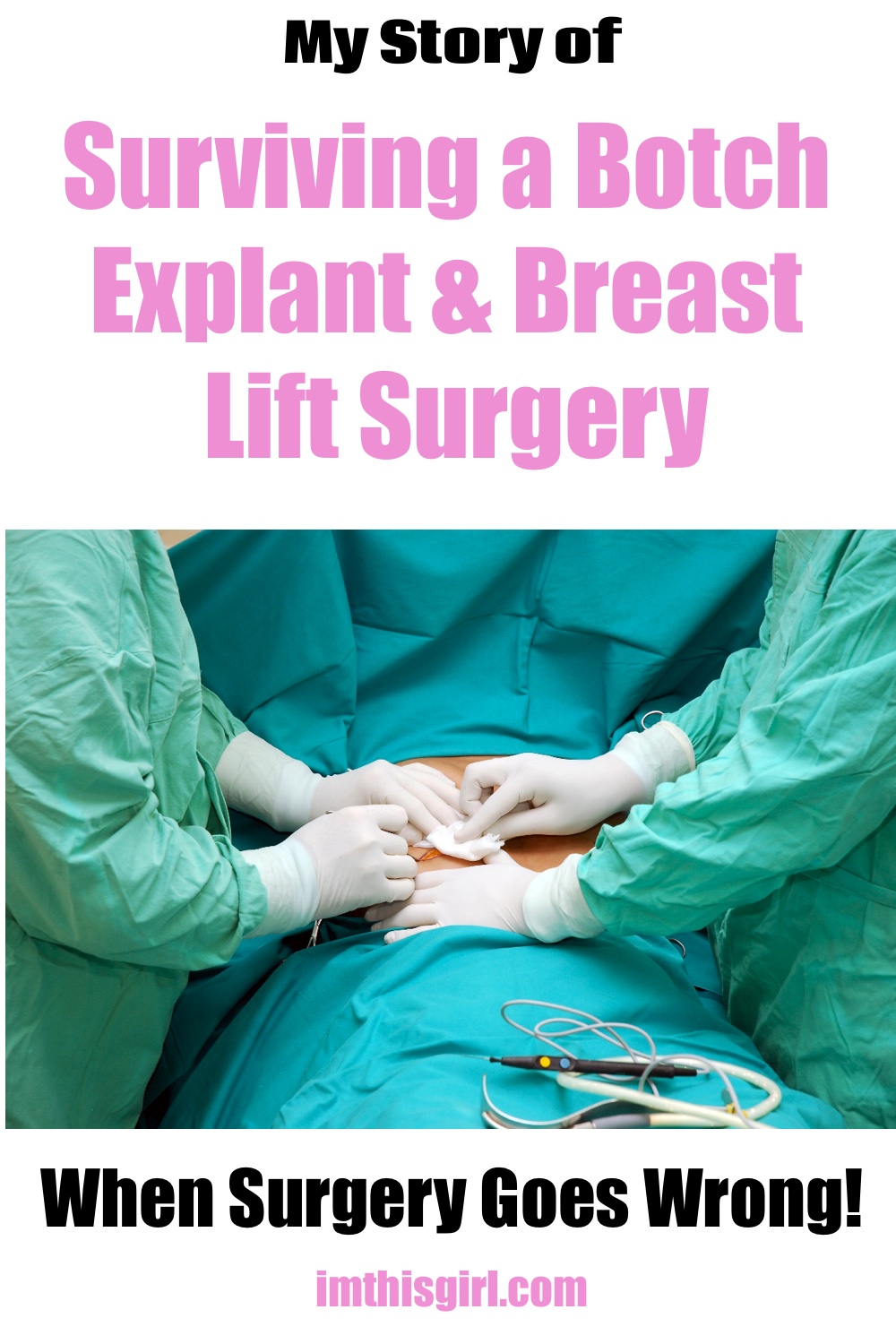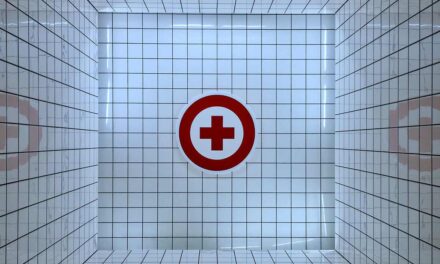Why is Plastic Surgery Dangerous?
*WARNING- THIS POST CONTAINS GRAPHIC IMAGES*

Are you in a rush? Here are the highlights…
Let me start off by saying, I know there are women out there with devastating stories of breast cancer and the tragedies they have had to endure. To those women, I can’t even imagine their emotional, mental, and physical trials. I honor those women.
But this isn’t about Breast Cancer and the complications that come along with this horrible disease. This is my story. And my choice to change my body and the risks we aren’t told about, that could change our lives forever.
Botched Surgery Stories
I’m sure by now you have all heard of Linda Evangelista, you know the supermodel who wouldn’t get out of bed for anything less than $10,000. She is now telling her story of her fat freezing procedure, becoming disfigured, a hermit, and now trying to get her life back.
And if you haven’t, I’m sure you have at least heard of those nightmare stories of people who go under the knife and circumstances take a turn for the worse.
I don’t know about you, but I thought… those were just stories and would never happen to me. Little did I know!
Educating Yourself About Plastic Surgery Beforehand
Many of us have considered having plastic surgery or have had it. And I am definitely not going to sit here and tell you… don’t do it. I am all for changing those things you don’t like about your body, if (keyword “IF”), you are absolutely sure you want to make those changes. One thing I really regret and what I warn others about is, making sure you are educating yourself before making those changes. Unfortunately, I had to learn the very VERY hard way!
My Plastic Surgery Story
If you have read any of my other posts, then you know, 10 years ago I made the choice to undergo a breast augmentation. I had 480cc Allergan implants placed in me with a bilateral subpectoral augmentation mammoplasty and a bilateral crescent mastopexy. Four years later I had to have them redone. Well, I had to have one side redone. My saline breast implant on the left ruptured, leaving me deflated on one side. Then I had to have another surgery to replace that malfunctioned implant.

Do You Have Breast Implants? Here’s What to Expect If You Ever Have an Implant Rupture…
My First Breast Implant Rupture

Sadly, all the above was the easy part.
Honestly, I still think about the time when I woke up in the morning to find one breast a lot smaller than the other. That in itself is traumatic, and I feel for anyone who has gone through that. It’s not fun at all!
Mentally it does something to you, waking up scared that there is something wrong with your body. Even though you know that it is a possibility (rare they tell you), but still a possibility that one or both implants can rupture at some point. It kinda freaks you out when it does happen.
But nothing would prepare me for what I would experience 6 years later. And still going through to this day!
Plastic Surgery- Breast Procedures
So, what happened you ask… what is worse than having a breast implant rupture and having to go through a second surgery?
Remember when I mentioned earlier that Linda Evangelista claimed she had become disfigured?
Well… I think I can join that club. But add on… necrosis, wound dehiscence, wound care and at this point 4 corrective surgeries, and currently disfigured. Maybe I can be the president of that club, haha.
Removing Breast Implants
After recognizing my breast implants were making me sick, I made the choice to have them removed.
When you remove your breast implants the doctor opens your chest, removes the implant and the capsule. The capsule is the surrounding scar tissue that forms around your implant. This is extremely important to have removed as well, because it is where a lot of the toxins that have leaked from your implants, get stored. This procedure is called Explanting.
He then sews you back up… and voila you are done. Oh boy, do I wish it was just that easy.

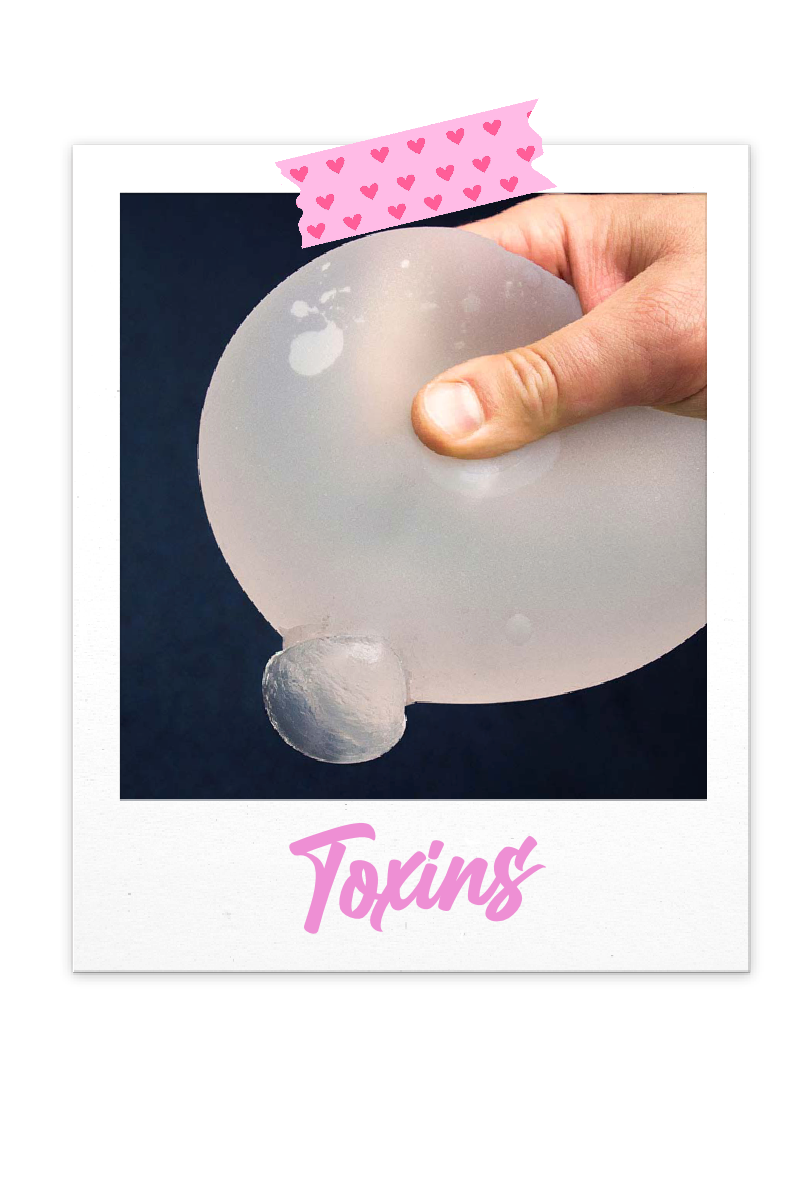

Explant With a Breast Lift
For some women, removing breast implants is just that simple.
But in many cases, women’s breasts have become very large after years of having implants, due to a few factors. This can be a cause of excess weight gain over the years. A good indicator points to Breast Implant Illness as one of the reasons. Or what really shocked me, was the weight of the implants themselves have a major effect on the breast! I had no clue…
When women place saline or silicone-filled bags into their chest, the weight over the years begins to weigh their fragile breast tissue down. Let’s just say breast implants speed up the curse of gravity in women’s breasts. Years later, you don’t have the perky breast you once had once paid for when you got them done the first time.
So back to what I was saying earlier… most of the time when removing your breast implants, a lift or possibly a reduction is required.
Breast Lift Vs. Breast Reduction
A breast lift is also known as a Mastopexy. This procedure raises the breast by removing excess skin and tightening the surrounding tissue. There are a few different ways to do this procedure and really depends on what your doctor’s preference is.
A mastopexy will give you a youthful appearance since the procedure lifts and tightens what you already have. Therefore, a breast lift doesn’t remove tissue or fat.
Now a breast reduction is when the breast is made smaller overall, by removing tissue such as fat and milk glands.
Why do Most Women choose to Have a Mastopexy?
Breast lifts are usually encouraged when removing breast implants, mainly because your breast have been stretched out by the implants. Makes sense… right?
A breast reduction in this case isn’t really done. Mainly because there just isn’t excess fat and milk glands that need to be removed once the implants have been taken out. But if you have had one when removing your implants… please leave a comment below and let us know about your experience.
So, more than likely the doctor will recommend with an explant, to remove the implant, and capsule and to consider a mastopexy procedure.
How Is a Breast Lift Done?
If you choose a mastopexy procedure, the plastic surgeon will reshape the breast by making an incision around the areola and vertically down from the areola to the breast crease.
The most popular lift procedure is known as the Anchor Incision. This procedure goes around the areola, down the breast, and a smile shape in the breast crease. One reason for this incision is to reduce the areola and reposition the nipple in a more natural area. Then the Doctor will remove the excess skin and tighten you up along that crease.
This will let the doctor shape and contour your breast, and if done right they have beautiful outcomes.
If done wrong… UGH! Start preparing yourself for the worst.
What is Necrosis?
Johns Hopkins Medicine says… ‘The word necrotizing comes from the Greek word “nekros”, which means “corpse” or “dead”. A necrotizing infection causes patches of tissue to die.’
Haha… that definition reminded me of the movie, My Big Fat Greek Wedding. ‘Every word comes from a Greek word’. Well in this case it does. And it’s important to highlight the terms ‘corpse’ and ‘dead’.
Necrosis is the death of most or all the cells in an organ or tissue due to disease, injury or failure of the blood supply.
So, what does this mean mainly pertaining to plastic surgery?
Why Does Necrosis Happen with Plastic Surgery Procedures?
WELLLLL… your tissue starts to die from the inside out because you didn’t have enough blood and oxygen supply to where you needed it to go. This compromised skin turns black. This can happen in the fat tissues or on the skin’s surface itself.
Unfortunately, there is no cure but eventual removal of that dead tissue.
What Can Cause Necrosis?
- Direct blood vessel injury -cutting off blood supply when removing tissue
- More common in Tummy Tucks and Breast Reductions
- Blood vessel dysfunction -a blot clot leading to a reduction in blood supply
- Tension -pulling you too tight, blocking the blood vessels which decreases blood supply
- More common in Tummy Tucks and Breast Lifts
My First Signs of Necrosis
I had my explant and mastopexy procedure on September 29th, 2021. For about a week I was wrapped up in a surgical bra and compression wrap with a drainage tube in each breast.
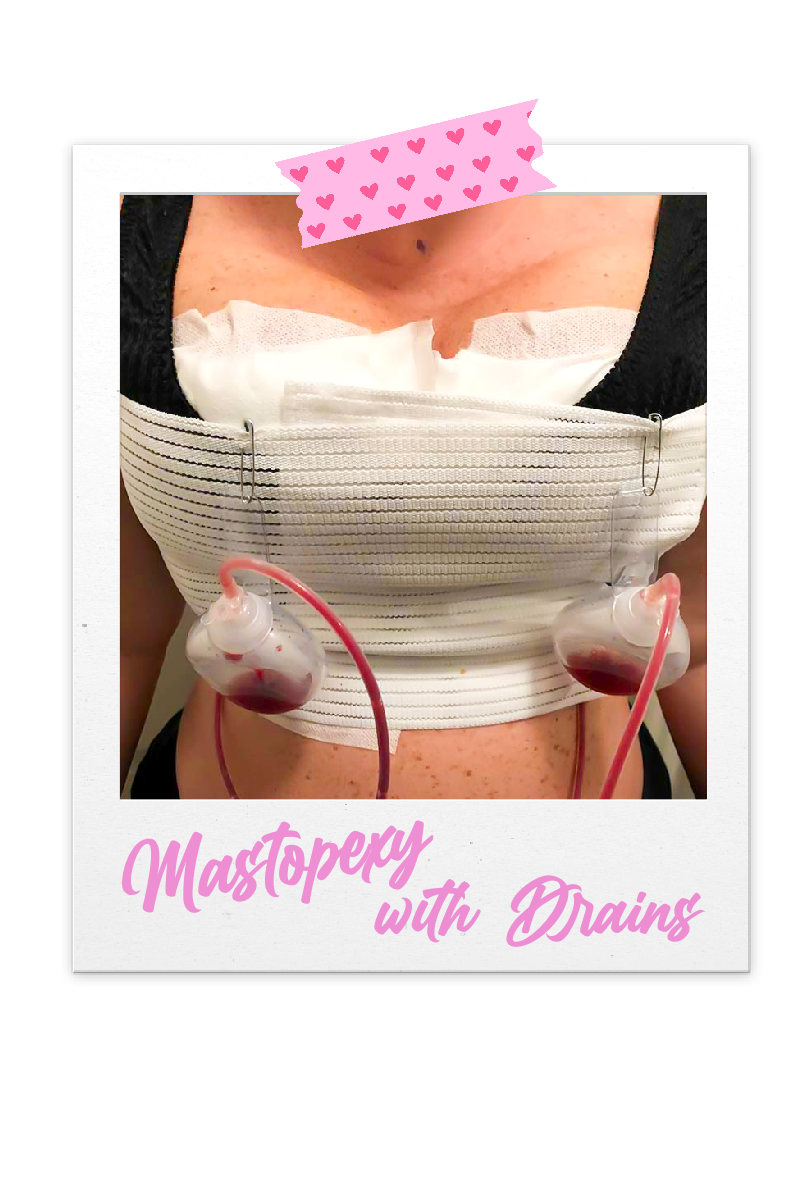
I was warned from the beginning that I was going to look like a Frankenstein’s creation because my surgeon liked to place the breast really high on the chest. This overtime would relax and fall very naturally. Which is exactly what had happened.
I was of course shocked by the appearance but was reassured this is what to expect and to give myself some time to heal.
But a few days later around the 4th of October, I started to notice more fluid leaking from the right breast, a lot of bruising under the crease, and a darker areola compared to the left.
I no longer had the drains in but continued to wear a compression bra and wrap.
Twelve days after my surgery that darkness was now black. It happened very fast. At that point, I had no idea what was happening to my right breast.
And no one was telling me the truth of what was really going on!
Symptoms of Necrosis
If you are like me, you have never had this surgery before. You don’t know what to look for, you don’t know what’s normal and what’s not.
You might be seeing changes in your body after surgery and are unsure if you are really experiencing necrosis. Well, here is a list of what you might likely to see if you are:
- Pain
- Redness of the skin
- Swelling
- Blisters
- Fluid collection
- Skin discoloration
- Sensation
- Numbness
I wasn’t in any pain besides what I was experiencing with just having had a major surgery. There was redness to my skin, swelling, blisters, fluid collection and I absolutely had skin discoloration.
Looking back now in my experience, these are the beginning signs to look for with necrosis after having a breast lift. After that though… there was no doubt in my mind that things had gone terribly wrong.
How My Post-Op Surgery Went from Bad to Worse
At first, I was told that the parts of my areola that were dark and had to be debrided. This area had become dry, leathery, and thick in appearance and pretty much was a scab that needed to come off.
By debriding this area, I needed to do what they call a ‘wet to moist’ regimen. You pack the area with wet gauze and then change this dressing twice a day. I was told that this will help put moisture back into that area and eventually the black stuff would fall off.
Yeah, well that didn’t happen…
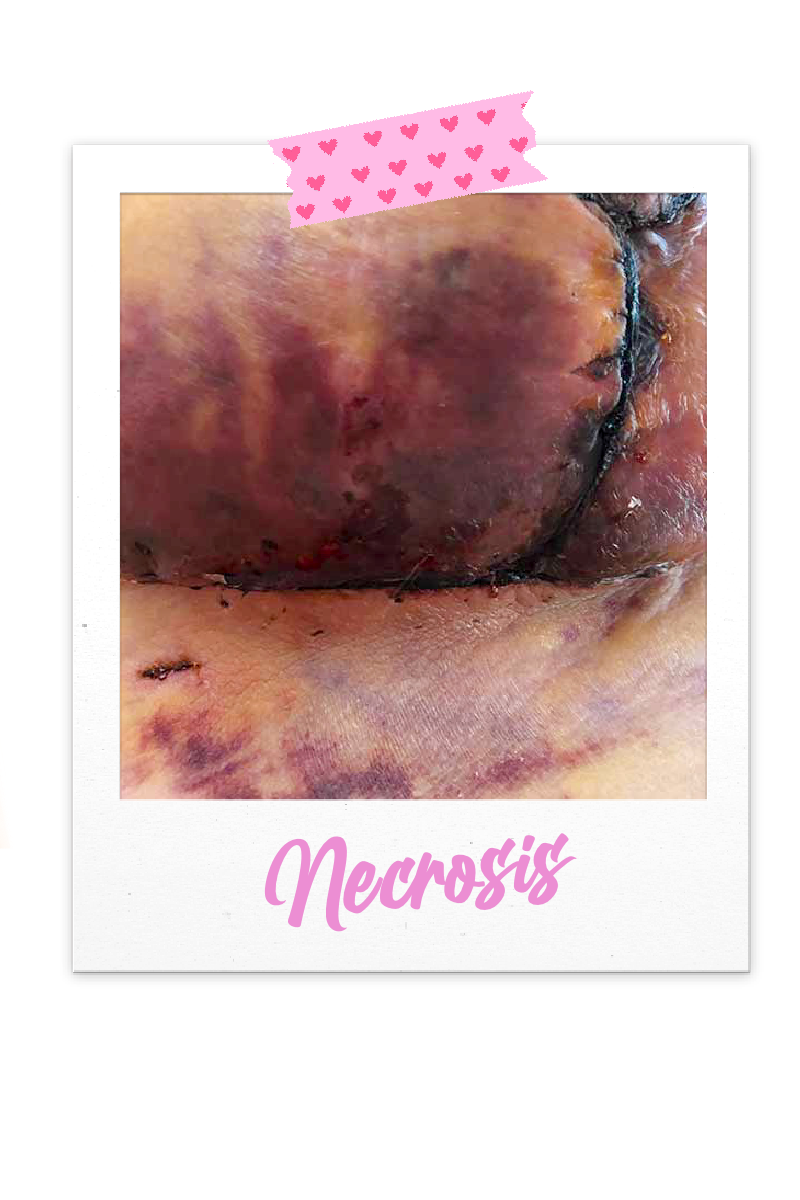
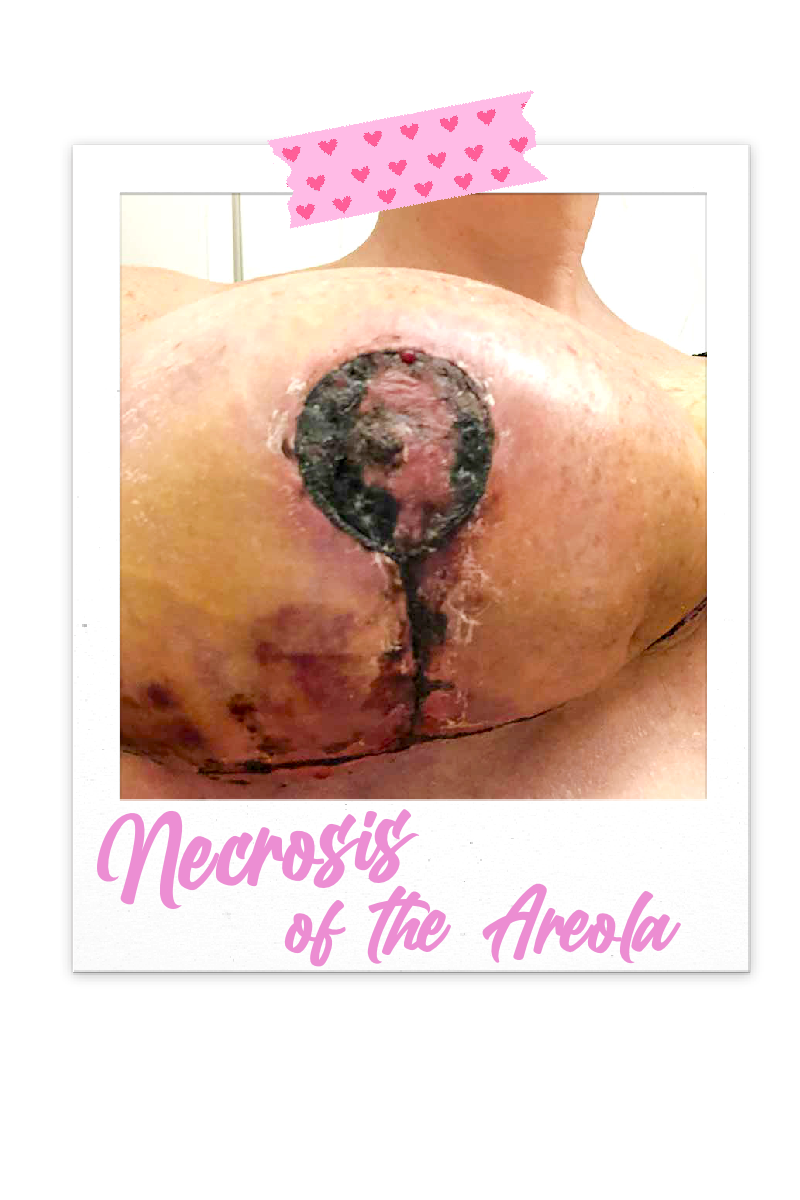
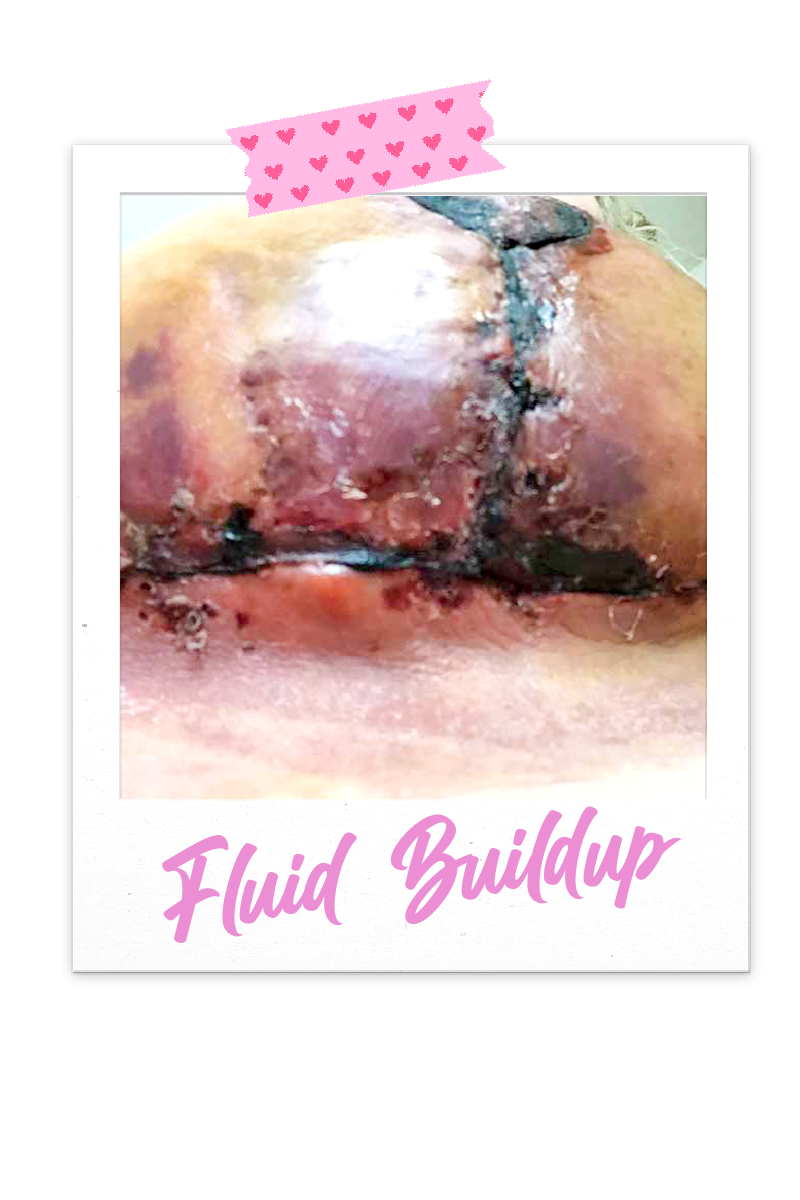
Necrosis Turned into Wound Dehiscence
Around October 12th, the dark black area was no longer just on my areola but had spread down the breast. The whole anchor incision had become completely black and was excreting fluid. Again, I was told to continue to do Wet to Moist dressings and to let the doctor know if I had any major changes.
Those major changes came about a week later when my right breast completely burst open!
Upcoming Post…
I wish my story ended there, but it didn’t. My situation became even worse. Not only did it take a turn on my body but affected my mental and emotional health.
I, like my right breast, was barely holding on… I know that was a gross visual but hey, if you don’t have humor you won’t survive. Haha.
Read my next post to see what happened after my breast ruptured open. Look… no one was telling me the truth of what was really going on.
Which is why I am writing this… so you know what to expect and have the right questions and answers if something like this ever happens to you!

Are you considering getting Breast Implants, an Explant or a Breast Lift?




